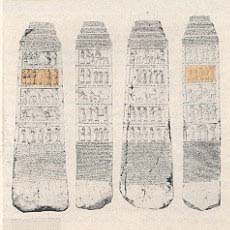The Black Obelisk
Sidebar to: Grisly Assyrian Record of Torture and Death

Discovered in Nimrud in 1846 by Austen Henry Layard, this 6.5-foot-high, four-sided monolith, known simply as the “Black Obelisk” (above), records ancient Israel’s obeisance to Assyria during a turbulent period in Israel’s history.

It all began with a coup d’etat. A garrison commander named Jehu marched his troops from Ramoth-Gilead, in northern Transjordan, to Samaria and seized the throne of the northern kingdom of Israel in about 842 B.C. After killing the reigning king Jehoram, he proceeded to eliminate all possible claimants to the throne by slaughtering the royal family, the courtiers and even Ahaziah, king of the southern kingdom of Judah, and his brothers (2 Chronicles 22:8–9). Jehu managed to do all this because he had the support of the army, of the poor and of prophets such as Elisha (2 Kings 9:1–3), who opposed the royal house and wanted to extirpate the Tyrian cult of Baal from Israelite religious life. Once in power, Jehu purged the cult by executing the prophets of Baal and destroying the temple of the god.
Already a library member? Log in here.
Institution user? Log in with your IP address.

